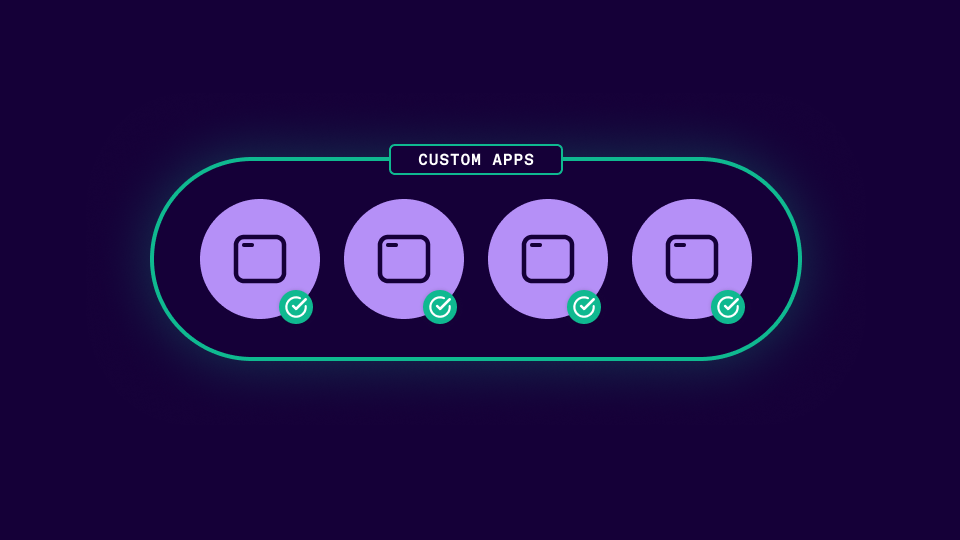
Every enterprise has a home-grown app that doesn’t fit standard IAM tools. SGNL connects those custom systems to Continuous Identity, enforcing real-time, contextual access policies that adapt as business and security conditions change.

Every enterprise has at least one: a home-grown application that doesn’t fit neatly into standard IAM tooling. Maybe it runs critical business operations, handles customer onboarding, or manages specialized workflows no commercial product can replicate. These applications often become the blind spots of identity and access governance: too essential to ignore, too unique to easily secure.
SGNL bridges that gap. By connecting custom-built applications to, SGNL enables the same level of real-time, contextual access control already available for cloud and code environments.
Custom applications rarely speak the same language as modern IAM tools. They may authenticate users through an IdP or SSO, but once inside, authorization tends to rely on static roles or local access tables. These systems can’t see whether a user’s context has changed; for instance, if their device has fallen out of compliance, if a ticket has closed, or if their shift has ended.
SGNL allows organizations to go further. By connecting to existing systems -identity directories, ticketing tools, security posture platforms- SGNL continuously ingests and relates their data within its Identity Data Fabric, enabling systems to evaluate and enforce policy with live context at the point of access.
SGNL imports and correlates users, groups, assets, and actions from your custom application into the Identity Data Fabric, where they become part of a unified identity model. That model is enriched with live business and security context from across your ecosystem; not just who the user is, but why they’re acting, from where, and under what conditions.
From there, SGNL can:
In other words, SGNL makes custom apps as intelligent about access as the rest of your environment.
Consider a custom-built customer support portal used by an organization’s service agents. Agents log in through Okta, but the portal itself manages fine-grained permissions internally.
With SGNL in place, access can be tied directly to business and security contexts. For example, SGNL can confirm that the agent has an active ServiceNow ticket, their device meets compliance standards through Intune or CrowdStrike, and their session aligns with working hours defined in the HR system. If the ticket closes or the device posture changes, SGNL automatically terminates the session and notifies the operations team — all without any code change to the portal itself.
The same principle applies to other internal tools: finance dashboards, order management systems, or R&D knowledge bases. As long as the application can surface data about users and actions and consume decisions or events in return, SGNL can fit seamlessly into the loop.
Security teams shouldn’t have to choose between flexibility and control. With Continuous Identity, even the most bespoke systems can participate in organization-wide policy enforcement.
Instead of bolting on scripts or relying on manual reviews, SGNL lets you enforce live, contextual access based on real business intent. That reduces exposure windows, aligns policy with purpose, and gives both developers and security teams the confidence that their home-grown systems are governed with the same precision as every other part of the environment.
Want more of the latest identity-first security topics and trends delivered to your inbox? Helpful and insightful content, no fluff.